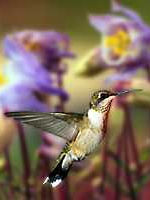You'll shoot your eye out, kid.
 Every year we battle with rabbits, and every year we become better warriors...
Every year we battle with rabbits, and every year we become better warriors... This past Christmas Lex got a [honest to god] red ryder bb gun. The exact same gun that Ralphie had in "A Christmas Story" (which is by the way one of my FAVORITE movies).
 Actually he got a shotgun (Remington 870 - REAL shotgun) and some bb guns. The shotgun is to shoot zombies and burglars, the BB gun is to shoot the bunnies.
Actually he got a shotgun (Remington 870 - REAL shotgun) and some bb guns. The shotgun is to shoot zombies and burglars, the BB gun is to shoot the bunnies. Yes. I said zombies. We are HUGE fans of the Walking Dead. If you have not seen it yet, I highly recommend watching it. The mid-season premier is coming up on February 12th on AMC. Anyway... back to the bunnies.
Lex wanted the BB gun to shoot the bunnies we found on our property this winter.
The bunnies cause such devastation to new plantings and bushes.
Which (coincidentally) every year we have so much of.
Rabbit damage can be seen in gnawed wood and sprouts that have been nibbled to the ground. They dig up bulbs that you have painstakingly planted, and reduce your perennials and shrubs into nubs. A few years back they even chewed through our Christmas lights outside. PESTS. But they sure are cute. Even as they ate
all of our blueberries and strawberries last summer.
Now when we seen one sitting on our property, Lex runs into the house to grab the red ryder and I quickly run at the bunny
[clapping my hands] shouting "run bunny, go go bunny". By the time he will return with the gun, I have safely shooed the bunny from our yard, delivering them to safety. So far this winter, Lex hasn't had a chance to shoot a single rabbit. What can I say, they are destructive BUT I have a soft spot for them. I had a rabbit named Thumper when I was a kid. True, I bought him the BB gun for Christmas; but I can't bare the thought of him actually shooting a bunny.
So each year we try different "weapons" to protect our home from these fuzzy tailed monsters.
 LIQUID FENCE:
LIQUID FENCE: This is our choice product early on in the growing season. It seems to work from March through May.
Warning: it is the most nasty smelling stuff you will ever encounter, and your neighbors will probably hate you for a few days. The odor lingers for about 24-48 hours, but the product lasts a few weeks (give or take some spring storms)
 SHOTGUN BRAND REPELS ALL (GRANULES):
SHOTGUN BRAND REPELS ALL (GRANULES): We swear by this product. This year we sprinkled it in with
every bulb we planted in the fall (~1100 of them). Every few weeks during the growing season we sprinkle some on the ground. We found that this is the product to use the beginning of summer through fall.
 CHICKEN WIRE AROUND YOUR PLANTINGS:
CHICKEN WIRE AROUND YOUR PLANTINGS: Self explanatory. The cage protects your plantings. Just make sure to bury it slightly to discourage burrowing animals to dig under the fence. This would work all seasons to protect your garden.
If rabbits are a big problem in your area consider planting specimens that are "rabbit resistant". I say that
tongue in cheek because they ate my barberry bushes last winter. Barberry is often thought to be rabbit resistant.
Here is a brief list of flowers you can add that are thought to be rabbit resistant:
- Agastache - Licorice sent. attracts butterflies. full sun. zone 5-10
- Allium - my personal favorite...the wild onion. full sun. zone 4-8
- Astilbe - adds great texture to the garden. part shade. zone 4-10.
- Baptisia - full sun. attracts butterflies. zone 3-8
- Bee Balm - sun, part sun. attracts butterflies. zone 3-9
- Catmint - another favorite of mine. incredibly hardy. sun, part sun. zone 3-9
- Daffodil - sun part sun. zone 3-9
- Daylily - SO EASY TO GROW. sun, part sun. zone 3-10
- Foxglove - part sun, zone 3-8 PROVIDE LIGHT AFTERNOON SHADE.
- Fritillaria - attracts hummingbirds. unique looking flower. can't wait to see mine in the spring. this is their first year. sun, part sun. zone 4-10
- Hellebore - one of the first plants to appear late winter/early spring. part sun, shade. winter interest. zone 4-9
- Iris - great cut flowers. sun, part sun. zone 3-9
- Lambs Ears - great texture (soft and fuzzy) full, part sun. zone 4-10
- Lavender - outstanding smell. full sun. zone 5-10
- Peony - unbelievable sweet smell. beautiful (if you don't mind a few ants). full sun, light shade. zone 2-8
- Salvia - I have them everywhere in my yard. beautiful. drought tolerant. full sun. zone 4-10
- Veronica - easy to grow. interesting flower spikes. full, part sun. zone 4-10
- Yarrow - attracts butterflies. great cut/dried flower. full sun. zone 3-9
 Our final project this season is to create a mowing strip along our front walk. It is very difficult to mow currently. Our property is every so slightly sloped, thus the need for the stepped walkway.
Our final project this season is to create a mowing strip along our front walk. It is very difficult to mow currently. Our property is every so slightly sloped, thus the need for the stepped walkway.
















